This is part #3 of a series of posts about fluke fishing on Cape Cod. To read part #1 click here and to read part #2 click here.
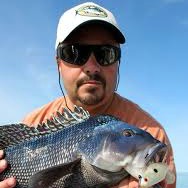
John D. Silva
If you really want to go all out for a potential trophy-size manhole cover, then you have to think big (as the old axiom says: big bait = big fish).
Try live-lining small snapper bluefish or scup along the bottom.
Fluke are voracious feeders and will aggressively attack baitfish up to 8 to 10 inches in length. The largest fluke I have ever battled was hooked while using a live snapper (juvenile) bluefish for bait.
More...
Additionally, a thin fillet carefully sliced from the side of a small baitfish (scup, pogy, mackerel, etc.) can also work well when drifted along the bottom. Once the rods are all rigged and the bait secured, there’s only one more piece of advice worth mentioning.
Before you leave the dock, don’t forget the net!
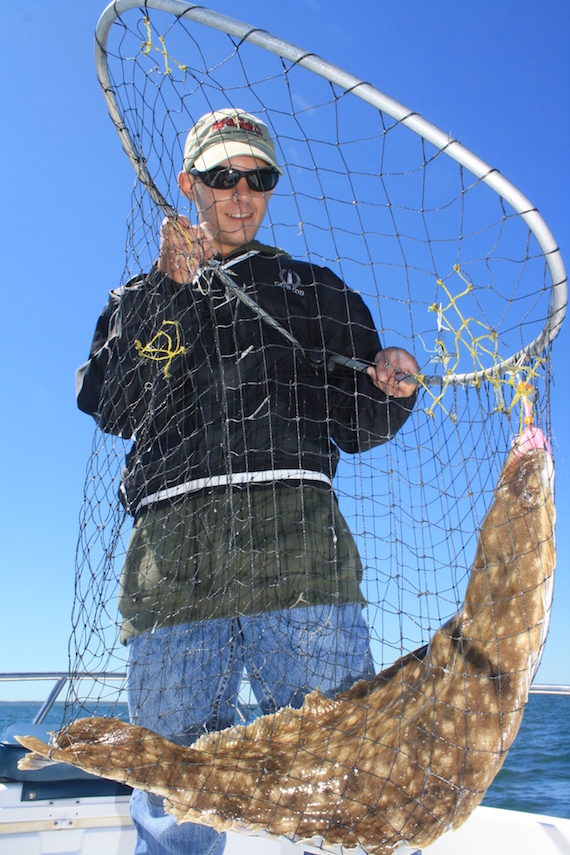
Don't forget the net! The author's son Brett Silva with a nice doormat.
You’ll find that fluke, especially large fluke, can be very difficult to bring over the rail without a good, wide, sturdy net. The thin membrane of skin around the mouth of the fluke is often not strong enough to support the weight of the thrashing fish as it is being pulled over the rail.
Bringing It All Together
Fluke fishing can be a leisurely, relaxing, enjoyable day on the water, which is part of the attraction and why so many people enjoy it.
Fluke fishing is also a great way to introduce kids or inexperienced anglers to the sport of fishing.
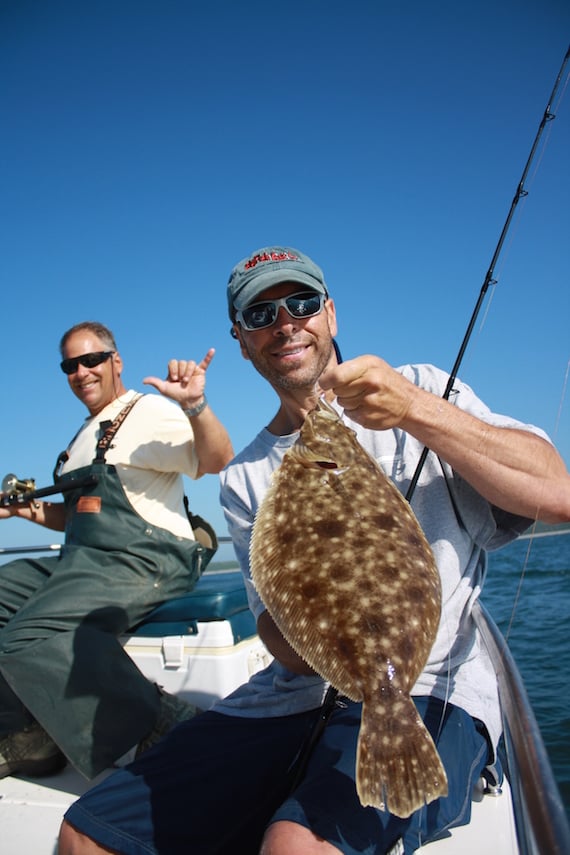
Have fun! Capt. Jason Colby (left) and Ron Powers (right).
Unlike some other forms of saltwater fishing, fluking is often more productive in bright, clear, sunny weather than it is in overcast conditions or darkness.
For the best chance of success, a brisk, consistent drift is extremely important. The stage of the tide, current, and wind direction should all contribute to keeping the boat moving along at a good clip, thus helping you cover a wide, productive area.
If the boat is not moving with the current, (for example, when the wind and tide are diverging in opposite directions, effectively holding you in place) then your fluking success will be significantly reduced.
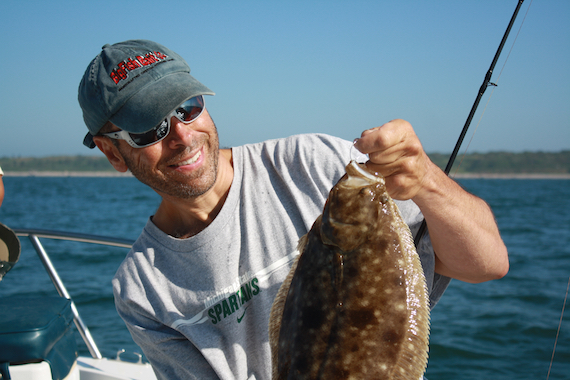
As we wrap up this series on fluke fishing, I just wanted to let you know that I had a lot of fun creating it!
Before I close things I out I want to share with you 3 more tips which I feel are worth mentioning:
- A 3-4 ounce baited bucktail jig attached to a traditional fluke rig is a proven, deadly effective setup to use for fluke in Vineyard Sound. In a pinch, a simple, no frills lead weight on a slider rig with a plain fluke hook will also suffice.
- When targeting monster fluke, it is essential to be aware of your drag settings before going to battle. A drag set too tight can result in the hook tearing through the fluke's thin mouth membrane. A drag that is too loose can give fish a momentary bit of slack in the line, just long enough for a fluke to take advantage and throw the hook.
- No matter the methods or location, one thing is for certain: your chances of landing a trophy fluke are significantly reduced if you neglect to include a net onboard when you leave the dock.
Good luck fluke fishing and have fun!

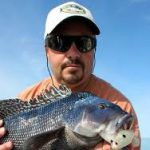
John very nice write up that I finally found the time to read all three.
Thanks Lav, it’s always nice to hear positive feedback…
-JD-
These are great John. Followed your suggestions and landed my first keeper fluke, a 24″ 5#’r in the Vineyard sound this AM. Glad i had the net, it hit my 4oz flukie with a Powerbait minnow with split tail.
That’s awesome to hear Darryl! Congrats!
Great post John, loving these articles about fluke fishing.
Hi Jane, thank you for your response.
Sea Robins? Hmmm, my advice would be to save a few and make a traditional French bouillabaisse out of them with shrimp and littlenecks. The last 1/3 of the tail section is delicate white meat and used with fish & chips throughout the world.
But basically, if you are using bait, you should expect to catch one every now and then (because they are so ugly, not many folks are making bouillabaisse). The good news is that a sea robin fillet is also excellent bait and stays on the hook real well. Cut it nice and thin so it flutters (versus “rolling”)
Using scented soft plastic baits like Gulp and Power grubs helps reduce robin landings, but even then, you’ll still get a robin on occasion.
There are also ways to fluke fish in shallow water where there are less robins using light tackle and small jigs, but even then, you’ll still get an occasional robin.
You can also catch fluke from shore in channels, canals, or tidal area where there’s substantial current and less robins. I used to take my son to the Cape Cod canal and drift fresh sand eels along the bottom over a sand hump (using 3-4 ozs) and catch fluke in the middle of clear, hot summer days. But that’s a whole other article in itself.
But in the end, if it’s still one robin after another, then you’re kinda stuck and need to move. I know that sounds simplistic, but it’s kind of the same thing with dogfish. Like weeds in the garden, telemarketers, and email spam, you can only do your best to get the least amount possible.
Good Luck!
-JD-
John – This is great info, thanks for all the nitty gritty on catching fluke, it hasn’t been a species I’ve attempted before but I did manage to catch a keeper this past week after reading your post. Question for you – Any suggestions on how to avoid the pesky sea robins, other than move on to another location?
More good info, thanks!